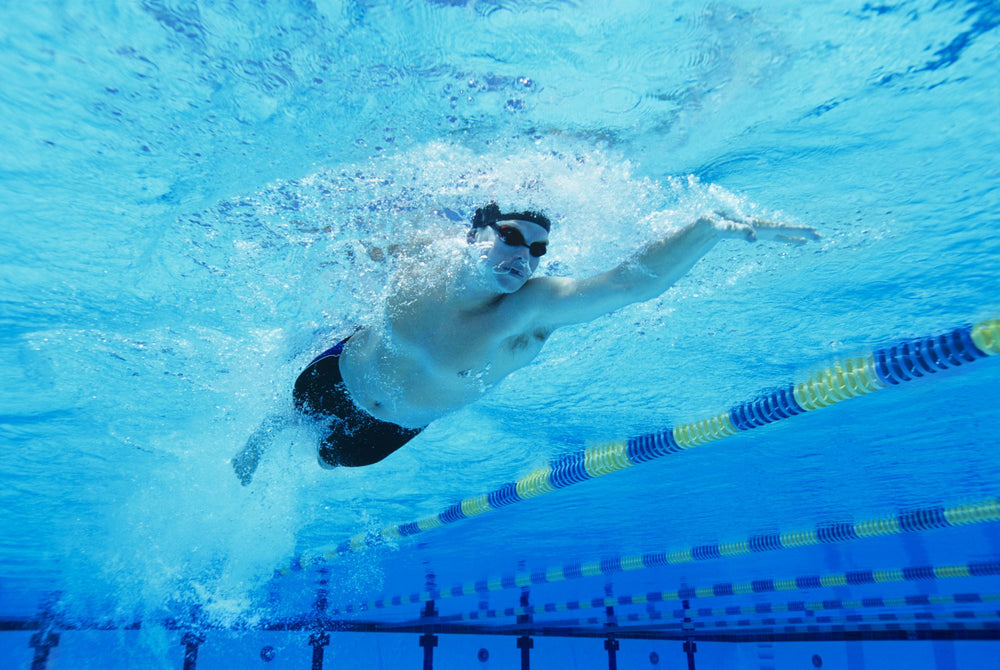Swimming lets you get out of the summer heat and lets you get a break from carrying yourself around all day. If you don’t love swimming there are other reasons you should swim. Swimming is a great, impact-free workout, and it can even relieve your back pain! So if you have back pain, swimming just became your favorite summer activity to get a break for your back. In order to have swimming help your back, it helps to know why it works and what kinds of swimming strokes are best—because we’re not talking about water slides and wave pools.
Why swimming helps your back.
One of the most common causes of back pain is strained muscles and ligaments. Swimming with proper form can relax your strained muscles and relieve stress on your joints and spine. Swimming also exercises and strengthens your back and core muscles, improving your posture. Even just relaxing in the pool can help with your back pain: buoyancy means no extra weight or pressure on your back. And the hydrostatic pressure of water encourages healthy blood flow to the most important muscles in your back. Because swimming is a non-weight-bearing exercise, it increases your range of motion, making you more flexible and relieving your tight muscles.
How to swim so you don’t hurt your back.
Start off slowly. As with many other exercises, begin gradually. After your doctor says that swimming is right for your back pain, try swimming twice a week. Gradually getting your muscles used to this new exercise will protect your muscles from additional strain and tearing.
Find pain friendly strokes. The best swimming stroke for your back is the backstroke. Maybe that’s how it got its name. For inexperienced swimmers, this is the best stroke because it is the easiest to keep your spine straight, and it doesn’t require you to strain your neck when you need a breath. Other strokes such as the breaststroke or freestyle can be good exercises for your back if you know the proper form. For breaststroke and freestyle, focus on keeping your spine and neck straight and avoid jerking your neck when turning for a breath. For some, it might be more helpful to start off in the pool by walking around or using a kickboard to swim laps. That way, you can strengthen your muscles before you move on to harder exercises. Whichever stroke or exercise you choose, remember that excessive rotation of your lower back and hips might cause you more pain. If you have never been instructed on proper swimming techniques, it might be beneficial for you to request some guidance from a professional before you jump in the pool.
Consider joining a water aerobics class or another aquatic exercise program. Having an instructor help you swim with the proper form will prevent you from harming your back further. It is also beneficial to be accountable to someone for your exercise and to meet friends who might be experiencing the same back pain as you are.
And remember, you can always roll out on the Chirp Wheel after a nice swim.
References
Cole, A. (2016, May 4). 3 Essential Tips for Swimming with Back Pain. Retrieved from https://www.spine-health.com/blog/3-essential-tips-swimming-back-pain
Hyde, T. (2012, October 2). Swimming and back pain. Retrieved from https://www.spine-health.com/conditions/sports-and-spine-injuries/swimming-and-back-pain
McCance, S. (2016, July 26). The Best Swimming Workouts for Low Back Pain. Retrieved from https://medium.com/@mccancemd/the-best-swimming-workouts-for-low-back-pain-639ad8831ec9
Melone, L. (2017, November 16). Do’s and Don’ts of Lower-Back Pain Exercises. Retrieved from https://www.everydayhealth.com/pain-management/back-pain/dos-donts-lower-back-pain-exercises/
O’Connor, A. (2013, February 15). Ask Well: Swimming to Ease Back Pain. Retrieved from https://well.blogs.nytimes.com/2013/02/15/ask-well-swimming-to-ease-back-pain/








